Plan the ideal visit with our travel guide to Cadiz, the oldest city in western Europe, on the Atlantic coast of Andalucia. Continuously occupied for 3000 years.
By Liza S. | Updated 28 Jun 2024 | Cádiz | Cities |
Login to add to YOUR Favourites or Read Later
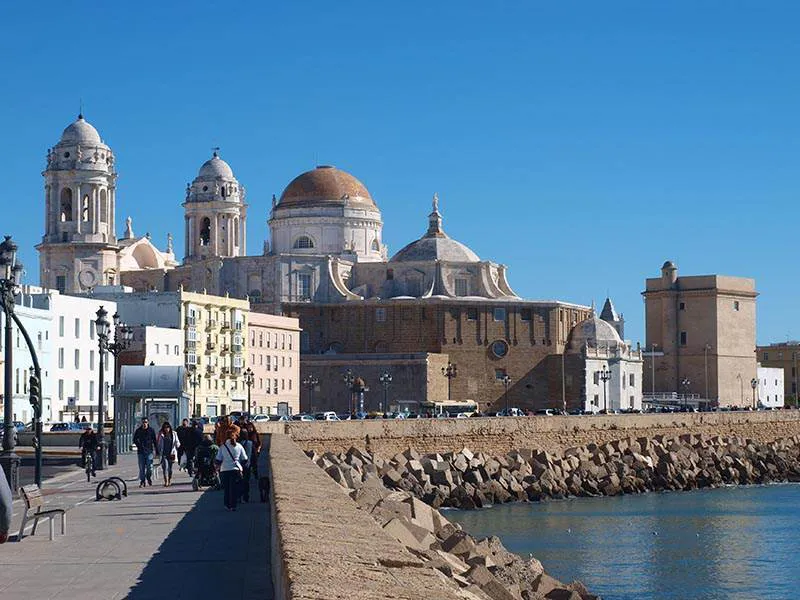
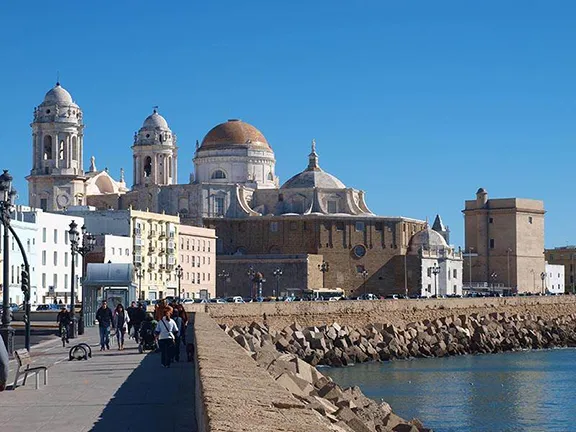
The Cathedral Cadiz
Planning a trip to Andalucia and looking for a unique destination that offers a mix of history, culture, and natural beauty? Look no further than Cádiz, a charming coastal city located in southern Spain. With its stunning beaches, well-preserved historic architecture, and vibrant local culture, Cádiz is the perfect place to explore on foot, by bike, or by boat.
As Europe's oldest continuously inhabited city, Cádiz is steeped in history and boasts a rich cultural heritage that dates back over 3,000 years. From the ancient Phoenician and Roman ruins to the Moorish and Baroque architecture, there is no shortage of fascinating sights to explore.
Whether you're interested in art, history, or simply soaking up the local atmosphere, Cádiz has something for everyone. So why not add it to your Andalucia itinerary and experience the best that this region has to offer?
Read on to learn more about Cadiz and how to plan the perfect visit!
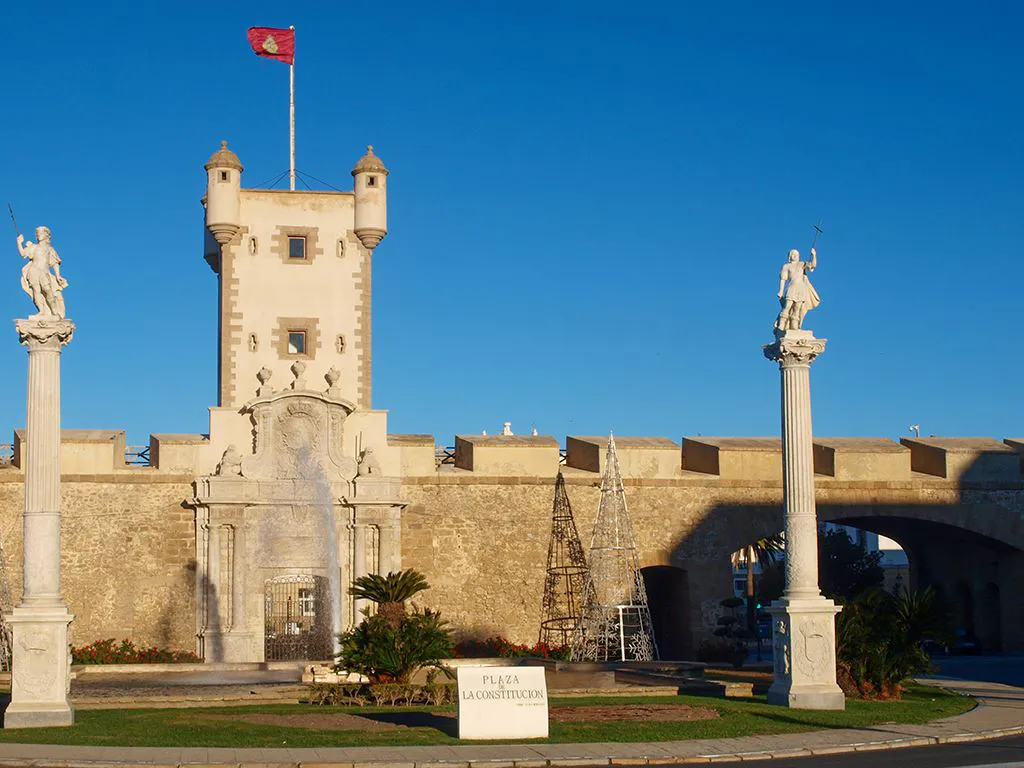
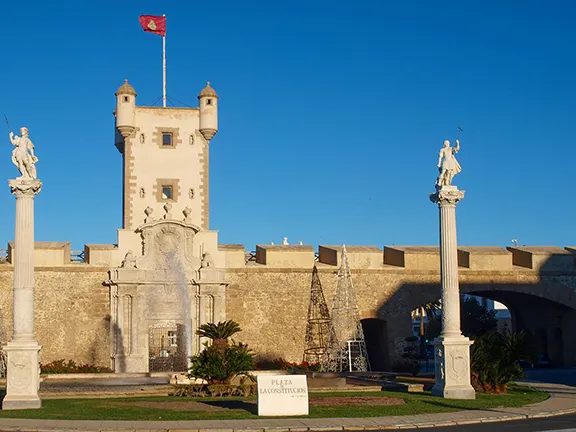
Puertas de Tierra, Cadiz
As you step into the ancient city of Cádiz, you'll be transported back in time. With roots dating back thousands of years, Cádiz is one of the oldest continuously inhabited cities in Western Europe.
The city's history can be traced back to the Phoenicians, who established a trading post here around 1100 BCE. They named the city Gadir, which means "walled stronghold" in Phoenician. The Phoenicians were followed by the Carthaginians and then the Romans, who made Gadir an important port and commercial center.
During the Roman period, the city was known as Gades and was a prosperous center of trade and commerce. The city's architecture reflects the Roman influence, with many buildings featuring columns, arches, and other elements of classical architecture.
After the fall of the Roman Empire, the city was ruled by a series of different groups, including the Visigoths and the Moors. In the 13th century, the city was conquered by the Christian forces of King Alfonso X of Castile, and it became part of the Kingdom of Castile.
During the Baroque period, the city experienced a period of great prosperity and growth. Many of the city's most beautiful buildings were constructed during this time, including the Cathedral of Cádiz, which is a stunning example of Baroque architecture.
Today, Cádiz is a vibrant and cosmopolitan city that is steeped in history and culture. Its rich heritage can be seen in its architecture, its museums, and its many festivals and celebrations. Whether you're interested in Roman history, Phoenician culture, or Baroque architecture, Cádiz has something to offer everyone.
Read more about Cadiz’s history here.
If you are planning a trip to Cadiz, there are several ways to get there. The best option depends on your departure city and travel preferences.
Jerez Airport serves mostly domestic flights and flights from selected European cities. From there, a taxi or a bus can take you ro Cadiz. The bus is, of course, the cheaper option at about €5 one-way and it takes about an hour to get to Cadiz.
You can also fly into Seville Airport (SVQ) or Malaga Airport (AGP), which are both roughly a 2-hour drive from Cadiz. If you’re coming from outside Spain, these airports are typically a better choice than Jerez Airport. From the airport in Seville or Malaga, you can head to the city’s train or bus stations for public transportation to Cadiz. Alternatively, you can rent a car and drive yourself to Cadiz.
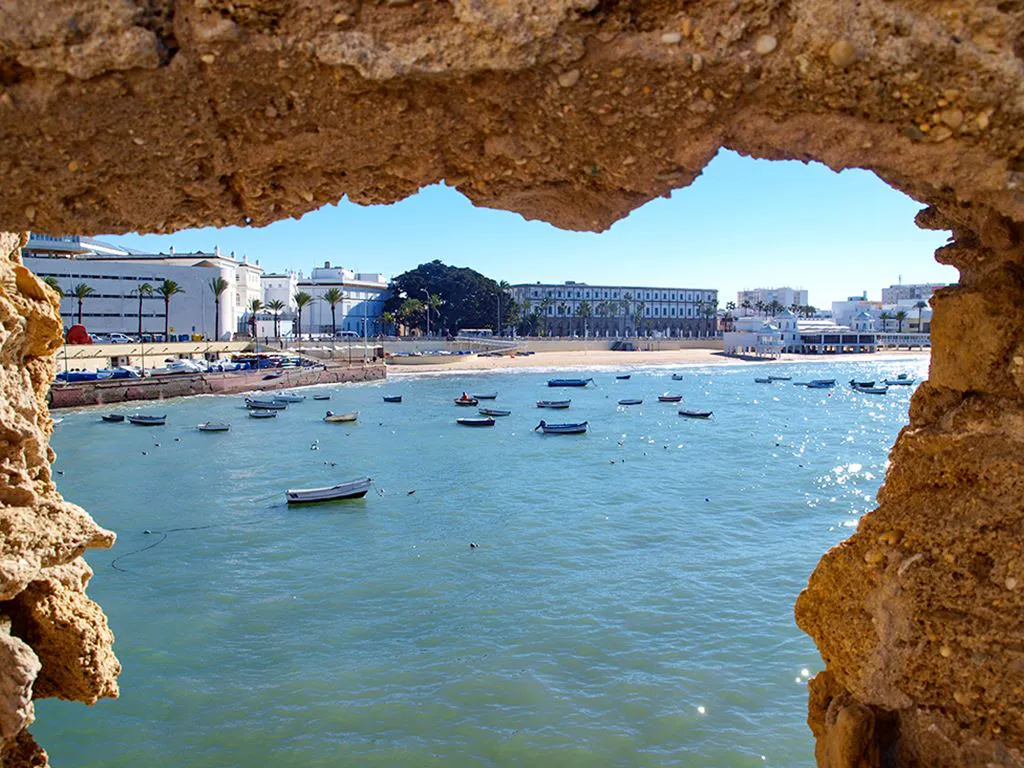
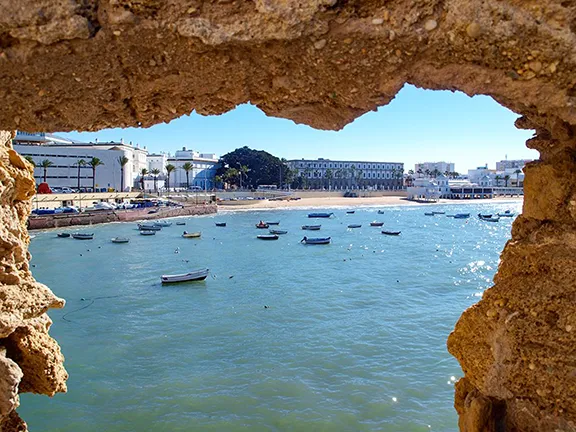
Playa de Santa Maria, Cadiz
The journey from Seville to Cadiz takes around 1 hour and 30 minutes, while the journey from Madrid takes around 4 hours and 30 minutes. Trains from Cadiz to Malaga take about 3 to 4 hours, usually with one connection.
Seville to Cadiz by bus is around 2 hours, while the journey time from Malaga is around 3 hours. From Madrid, a bus to Cadiz will take just over 6 hours.
There are several highways that connect the city to other parts of Spain. From Seville, you can take the A-4 highway, while from Malaga, you can take the A-7 highway. The journey time from Seville to Cadiz is around 1 hour and 30 minutes, while the journey time from Malaga is around 2 hours and 30 minutes.
When driving in Spain, it is important to note that you will need an International Driving Permit if you are not an EU citizen. Do note that the country drives on the right-hand side of the road. It is also mandatory to wear seat belts and to carry a reflective vest and a warning triangle in your car.
Cadiz is a small city, and it is easy to get around on foot. The Cadiz Old Town is especially pedestrian-friendly, with narrow, winding streets that are best explored on foot. Physical maps are readily available or you can use GoogleMaps for convenience and it is easy to find your way around the city centre.
If you prefer not to walk, there are other options for getting around Cadiz. Buses are run by the city's local authorities and operated by Autobuses Urbanos de Cádiz, a municipal company. There is a network with 5 lines, and the buses are fairly new and all have air conditioning (essential in summer). You can buy a ticket on board the bus, and the fare is reasonable.
Taxis are also available, and they are a convenient way to get around the city. You can find taxis at taxi ranks throughout the city, or you can hail one on the street. Taxis are metered, and the fares are regulated by the city, so you can be confident that you will not be overcharged.
If you are planning to explore the wider area around Cadiz, renting a car is a good option. Driving in the city centre can be challenging due to narrow streets and limited parking, but outside the city, the roads are generally good, and there are many interesting places to explore.
While the city is beautiful year-round, certain seasons and events may impact your experience. Here's a breakdown of the best times to visit Cadiz based on different factors.
July and August are the hottest months, with temperatures often exceeding 30°C. If you prefer cooler weather, consider visiting in the shoulder season between November and April. While temperatures can drop to around 10°C, there is still plenty of sunshine and fewer crowds. I’ve visited Cadiz in the winter (February) and the city still felt pretty lively!
Semana Santa, or Holy Week, is another important event in Cadiz. This religious festival takes place in the week leading up to Easter, with processions and ceremonies throughout the city. If you're interested in experiencing Semana Santa, plan your visit for this time. Keep in mind that the city can be crowded during this period, and some businesses may be closed on certain days.
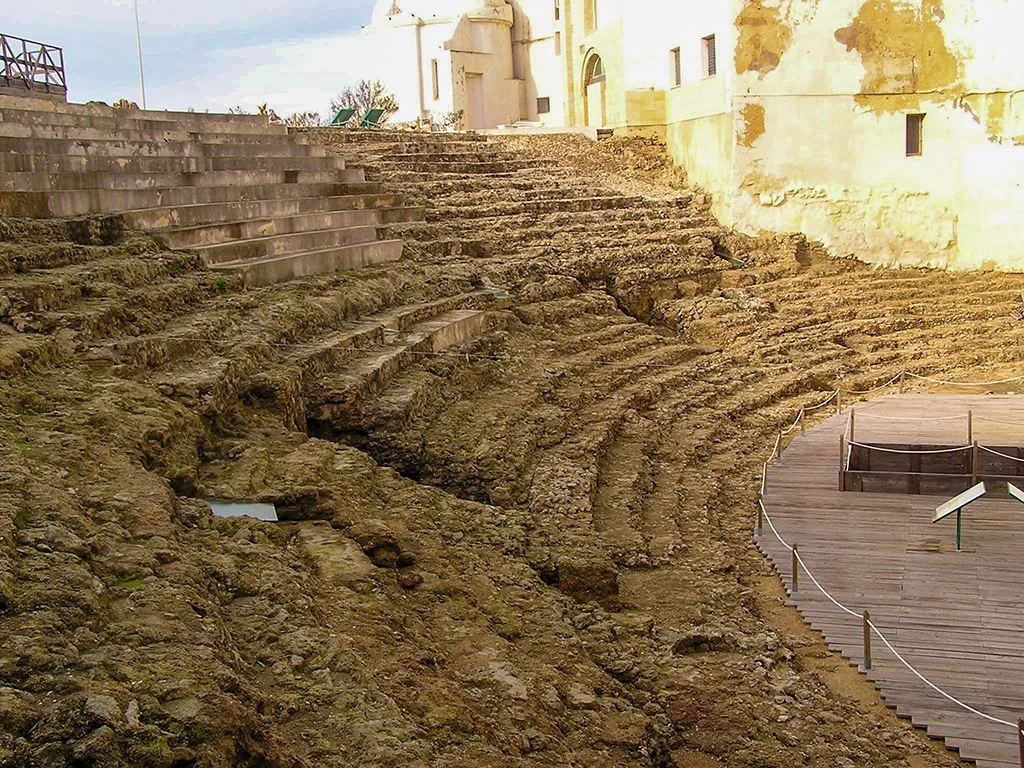

With its rich history, beautiful beaches, and unique attractions, there's something for everyone in this charming city. Here are the top 10 things to do in Cadiz.
Cadiz is a beautiful and unique destination that's perfect for anyone looking for a mix of history, culture, and relaxation. You can check out our full list of things to do in Cadiz here. We also have a list of tour recommendations in Cadiz. With so many things to do and see, you're sure to have a great time exploring this charming city.
Cadiz is a city that is steeped in tradition and culture, and one of the best ways to experience this is through its many festivals. Here are some of the most popular festivals in Cadiz that you won't want to miss.
Colorful parades fill the streets, with the Three Kings riding through the city, throwing sweets to the crowd. Families gather to watch the spectacle and children excitedly await their gifts. It's a joyous occasion that combines tradition, community, and the magic of the holiday season in Cádiz.
Learn more about the festival here.
What makes the Carnival of Cádiz unique is its clever and often satirical humor. Groups of performers called chirigotas, comparsas, and coros create witty songs and skits that comment on current events, politics, and social issues.
Chirigotas are known for their humorous songs and costumes, comparsas focus on more serious themes often with poetic lyrics, and coros are larger choirs that deliver complex musical arrangements. Each group type has its own unique style and adds diversity to the festivities.
This satirical element adds a distinctive and entertaining dimension to the carnival.
Carnival is a time for everyone to let loose and have fun, so make sure to join in on the festivities!
Read more about Carnival in Cadiz.
Read more about Semana Santa in Andalucia here.
The festival features a lineup of talented jazz musicians and bands performing a diverse range of jazz styles, from traditional to contemporary. The festival's atmospheric venues, including historic theaters and open-air spaces, provide a perfect backdrop for captivating performances.
The Cádiz Jazz Festival offers an unforgettable experience for music lovers and a platform for jazz appreciation and exploration.
Learn more about the festival here.
Other than these festivals that happen within the city, there’s a whole host of festivals and fiestas happening throughout the year in Cadiz province. You can check them out here.
If you have more time in Cadiz, you'll be happy to know that there are several day trips you can take from the city. Here are some of the best options for day trips from Cadiz.
Only about 1.5 hours away from Cadiz by car, Seville is a great place to experience the culture and history of Andalusia. Top attractions in Seville that you can see on a day trip include the Alcazar, the Cathedral, and the Plaza de España.
You can easily do a DIY day trip to Seville from Cadiz but if you prefer a hassle-free experience, you can opt for a guided day tour that includes transportation, a guided tour of the city’s main highlights, and a stop in Jerez de la Frontera.
Another highlight in Jerez that you can’t miss are seeing the iconic Andalucian dancing horses. Watching the show that combines equestrian skills and Spanish music is an unforgettable experience!
The short distance and numerous bus connections make a day trip to Jerez very easy. If not, a private guided tour to Jerez is also a great choice so that you can sit back and relax.
The best way to see the city when you arrive is to book a tour. This 1h 45 min private tour that includes the highlights of Gibraltar is a great option when visiting on a day trip.
The best way to visit Ronda from Cadiz is by car.
Like Ronda, Vejer is best visited by car.
Cadiz offers a variety of accommodation options for all types of travelers. Whether you're looking for a budget-friendly hostel or a luxury hotel, there's something for everyone in this charming city.
If you want to experience the history and culture of Cadiz, staying in the Old Town is the perfect choice for you. This area is filled with narrow, winding streets, Gothic and neo-classical architecture, and evidence of the Roman and Moorish occupations. You can explore the city's rich history and enjoy the local cuisine at the many restaurants and cafes in the area.
Some popular hotels in the Old Town include Boutique Hotel OLOM and Parador de Cadiz.
Looking to enjoy the sun, sand, and sea in Cadiz? Staying in the beach area is the best option for you. The beach area is located just a short distance from the Old Town and offers a range of accommodation options, from budget-friendly hostels to luxurious hotels.
Some popular hotels in the beach area include Hotel Playa Victoria and Senator Cadiz Spa Hotel.
For a full guide on the best areas to stay in Cadiz and more specific recommendations, read our Where to Stay in Cadiz guide.
Alternatively, check out the latest deals in Cadiz below.
Booking.com
Travelling to/around Spain and need some help? Here are my favourite travel resources.
I usually use Booking.com to look for hotels or apartment rentals. Lots of choice & you can unlock more discounts with their Genius loyalty programme!
To research transportation options around Spain, I like using Omio. It’s an easy way to compare different modes of transport and prices in one place. To search train routes, schedules, and prices, I recommend using Trainline.
Renting a car gives you the ultimate freedom to explore Andalucia at your own pace. Click here to compare car rental prices. (You’ll be surprised at how affordable it is in Spain!)
Looking for tours & activities in Andalucia? I usually use Get Your Guide to get tickets and book tours. Viator also has a huge catalog of activities and tours across many cities in Spain. Our Viator Shop has my top recommendations, all in one place!
Guruwalk is my favourite platform to find the best free walking tours in a city.
For last-minute holiday deals, check out Expedia UK.
For money transfers or spending overseas in foreign currency, Wise is my favourite borderless banking service. I love their debit card that's without fees and always use it when I travel.
Travel insurance is a must to protect against emergencies and unexpected incidents. I personally use SafetyWing and you can get a no-obligation quote from SafetyWing.
For an easy way to stay connected on the road, get an eSim from Airalo. It's affordable and, best of all, you'll be connected the moment you arrive!